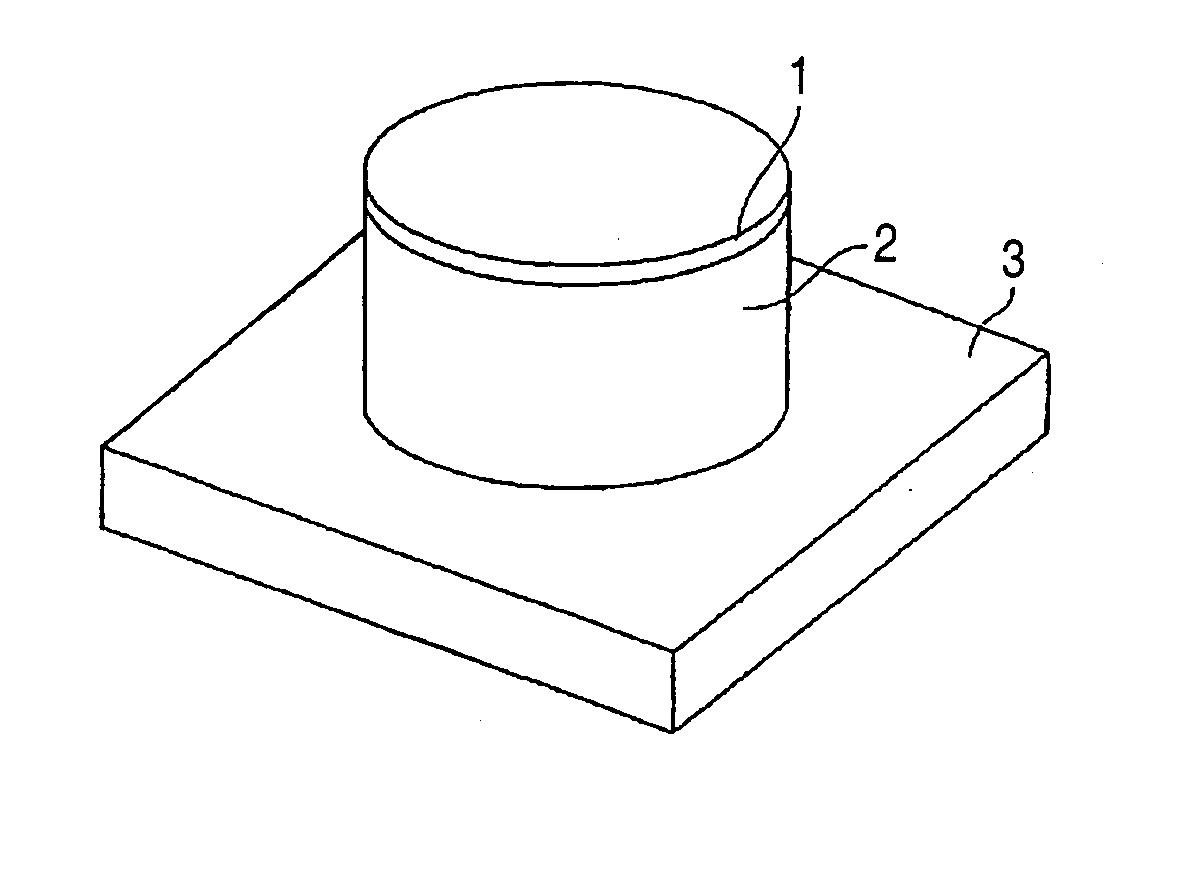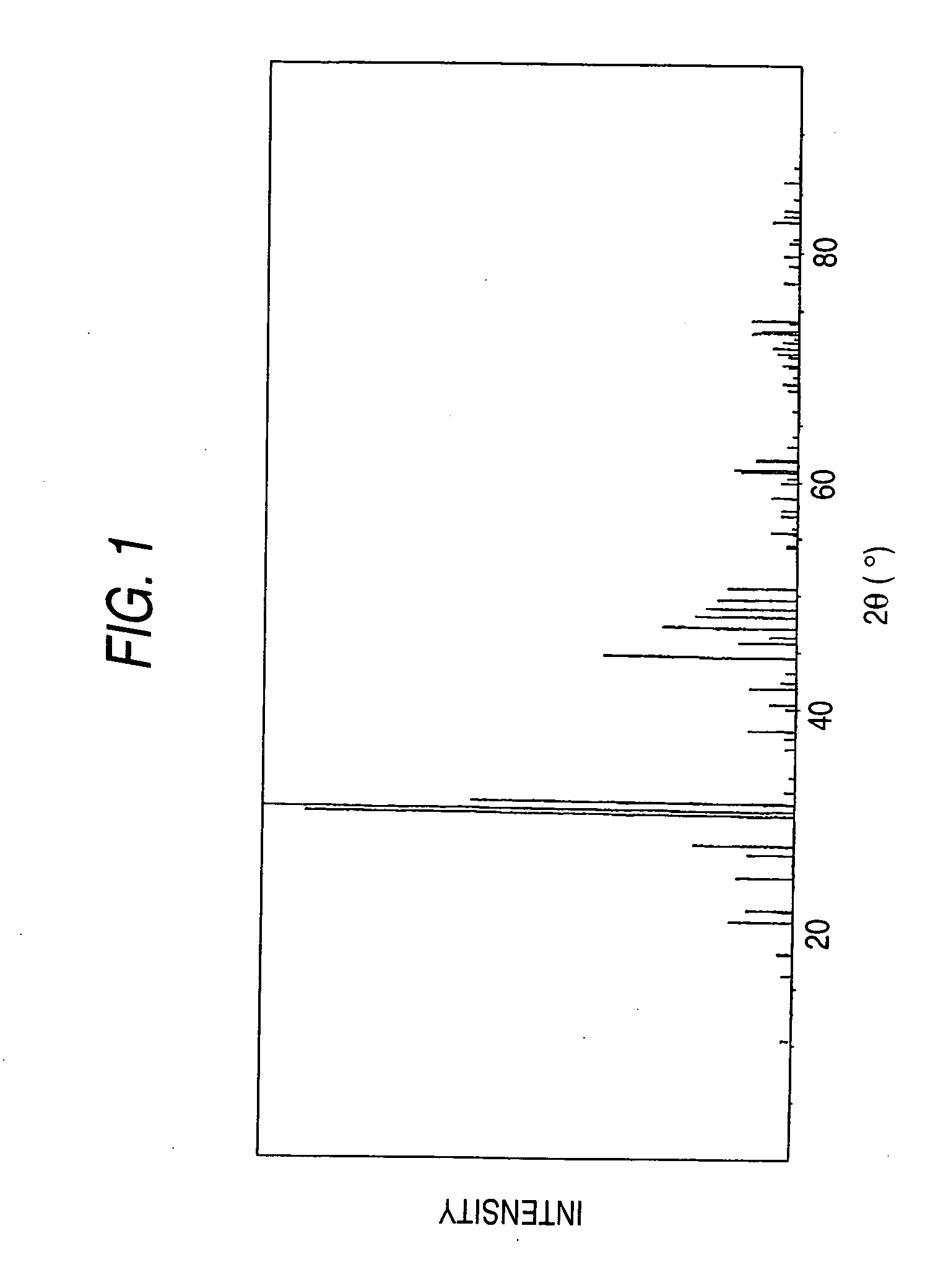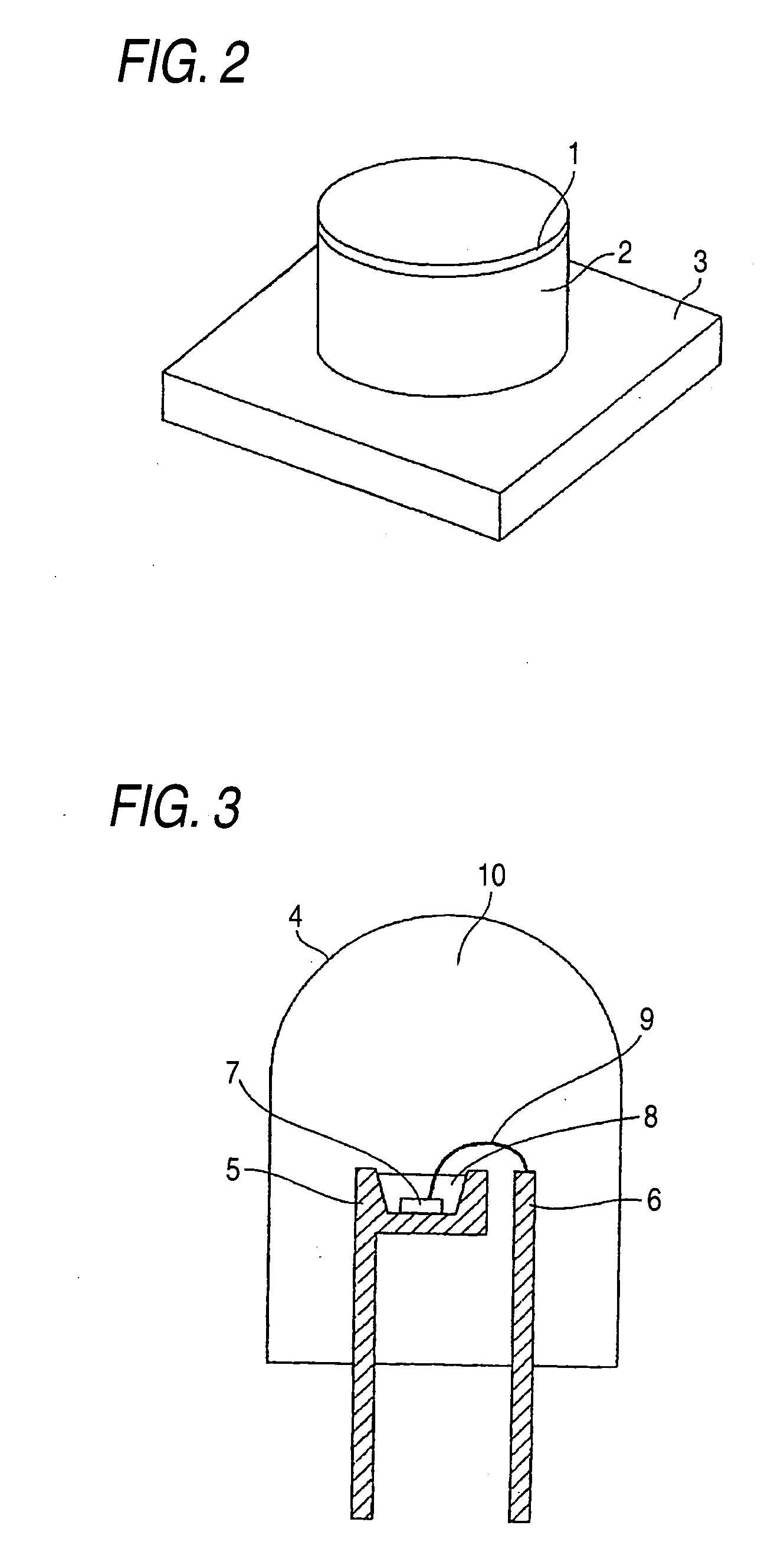Light emitting device and illuminator using the same
a technology of light emitting device and illuminator, which is applied in the direction of discharge tube/lamp details, discharge tube luminescent screen, discharge tube/lamp details, etc., can solve the problems of energy loss and emission intensity reduction, and achieve the effect of maintaining charge compensation effect, reducing emission intensity, and reducing emission intensity
- Summary
- Abstract
- Description
- Claims
- Application Information
AI Technical Summary
Benefits of technology
Problems solved by technology
Method used
Image
Examples
example 1
[0229] With pure water, 0.1055 mole of SrHPO4, 0.0352 mole of SrCO3, 0.0176 mole of SrCl2 and 0.0088 mole of Eu2O3 were pulverized and mixed in a wet-type ball mill made of alumina and containing beads. After drying, the resulting mixture was caused to pass through a nylon mesh. The pulverized mixture was sintered by heating at 1200° C. for 2 hours in an alumina crucible under a nitrogen gas stream containing 4% of hydrogen. The sintered mixture was then washed with water, dried and classified, whereby a phosphor Sr4.5Eu0.5(PO4)3Cl was prepared.
[0230] The X-ray diffraction pattern of the resulting phosphor is shown in FIG. 4. From the diagram, it has been found that the peak pattern of FIG. 4 is crystallographically identical to that of Sr5(PO4)3Cl of FIG. 1.
[0231] The emission spectrum of the resulting phosphor excited at 400 nm which is a dominant wavelength of the ultraviolet region of a GaN light emitting diode is shown in FIG. 5.
[0232] In Table 1, the wavelength of emission ...
example 2
[0234] In a similar manner to Example 1 except for the use of 0.1055 mole of SrHPO4, 0.0176 mole of SrCO3, 0.0176 mole of SrCl2 and 0.0176 mole of Eu2O3 as raw materials instead, a phosphor Sr4Eu1(PO4)3Cl was prepared.
[0235] The X-ray diffraction pattern of the resulting phosphor is shown in FIG. 6. From the diagram, it has been found that the peak pattern of FIG. 6 is crystallographically identical to that of Sr5(PO4)3Cl of FIG. 1.
[0236] The resulting phosphor was excited at 400 nm, that is, a dominant wavelength of the ultraviolet region of a GaN light emitting diode. The wavelength of its emission peak, relative emission intensity (i), a quantum absorption efficiency αq of the phosphor and a product αq·ηi of the quantum absorption efficiency αq and the internal quantum efficiency ηi of the phosphor as measured using a reflector having a reflectance of 98% are shown.
[0237] The Eu—Eu mean distance was 6.7 Å.
example 3
[0238] In a similar manner to Example 1 except for the use of 0.1055 mole of SrHPO4, 0.0176 mole of SrCl2 and 0.0264 mole of Eu2O3 as raw materials instead, a phosphor Sr3.5Eu1.5(PO4)3Cl was prepared.
[0239] The X-ray diffraction pattern of the resulting phosphor is shown in FIG. 7. From the diagram, it has been found that the peak pattern of FIG. 7 is crystallographically identical to that of Sr5(PO4)3Cl of FIG. 1.
[0240] The resulting phosphor was excited at 400 nm, that is, a dominant wavelength of the ultraviolet region of a GaN light emitting diode and emission spectrum was measured. The wavelength of its emission peak, relative emission intensity (i), and a quantum absorption efficiency αq of the phosphor and a product αq·ηi of the quantum absorption efficiency αq and the internal quantum efficiency ηi of the phosphor as measured using a reflector having a reflectance of 98% are shown.
[0241] The Eu—Eu mean distance was 5.9 Å.
PUM
| Property | Measurement | Unit |
|---|---|---|
| excitation wavelength | aaaaa | aaaaa |
| excitation wavelength | aaaaa | aaaaa |
| excitation wavelength | aaaaa | aaaaa |
Abstract
Description
Claims
Application Information
 Login to View More
Login to View More - R&D
- Intellectual Property
- Life Sciences
- Materials
- Tech Scout
- Unparalleled Data Quality
- Higher Quality Content
- 60% Fewer Hallucinations
Browse by: Latest US Patents, China's latest patents, Technical Efficacy Thesaurus, Application Domain, Technology Topic, Popular Technical Reports.
© 2025 PatSnap. All rights reserved.Legal|Privacy policy|Modern Slavery Act Transparency Statement|Sitemap|About US| Contact US: help@patsnap.com



